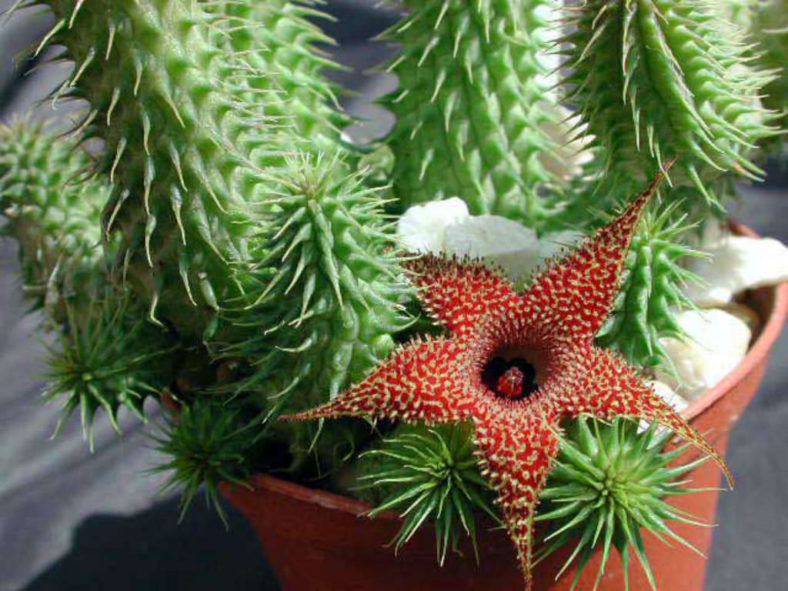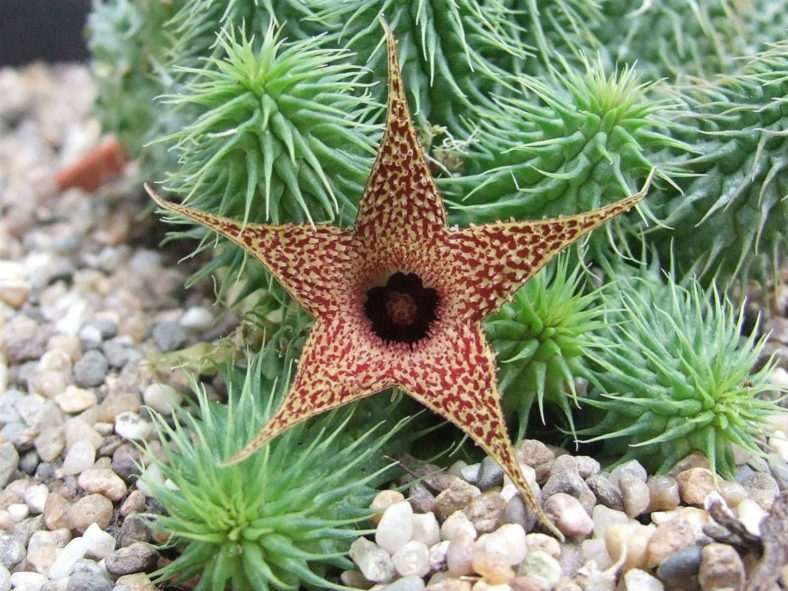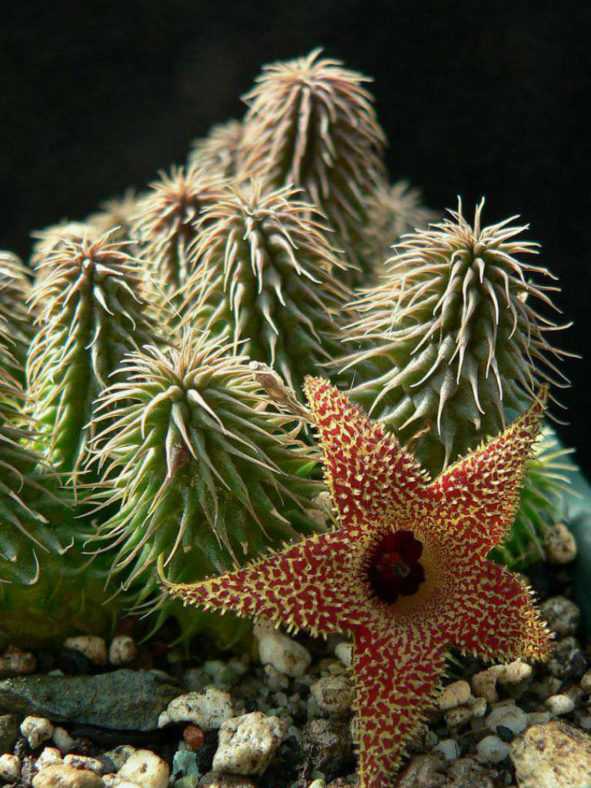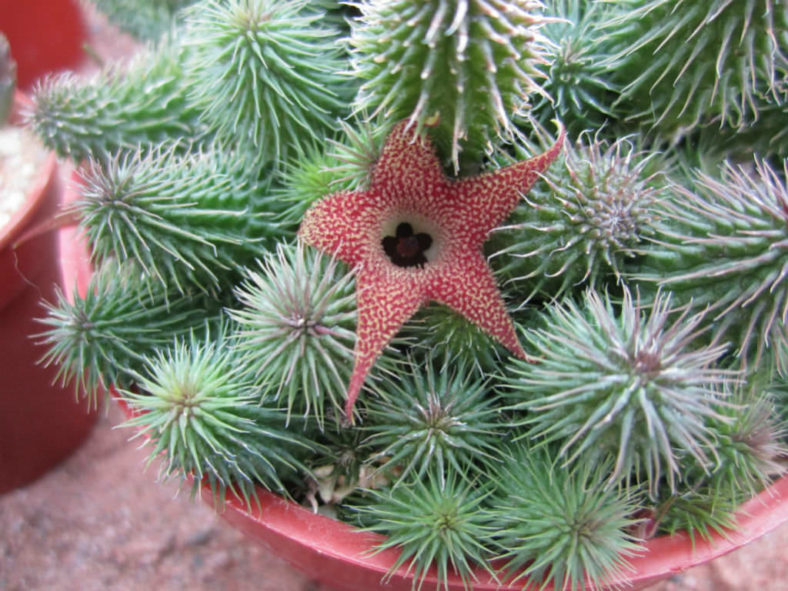Scientific Name
Huernia pillansii N.E. Br.
Common Name(s)
Cocklebur, Cockle Burrs
Scientific Classification
Family: Apocynaceae
Subfamily: Asclepiadoideae
Tribe: Stapeliae
Genus: Huernia
Etymology
The specific epithet "pillansii" (pronounced "pil-AN-see-eye") honors Neville Stuart Pillans (1884–1964), a South African botanist.
Origin
Huernia pillansii is native to South Africa (Cape Province).
Description
Huernia pillansii is a small succulent that forms dense to loose clumps of erect or ascending stems covered in tubercles tapering into a soft bristle. The stems are subglobose when young, becoming narrowly ovate or cylindrical with age. They can grow up to 7.2 inches (18 cm) long and 0.6 inches (1.5 cm) in diameter, excluding teeth. The tubercles are arranged into 10 to 1,6, often spiraling rows, measuring up to 0.4 inches (1 cm) in length.
The showy star-like flowers can reach a diameter of 2 inches (5 cm) and appear freely from late summer to early fall. Outside, they are yellowish to pinkish, becoming cream towards the base, smooth with three raised longitudinal veins on the lobes and the upper part of the tube. The inner surface is densely papillate, cream-colored, finely spotted with red, and, from a distance, has the appearance of being pale brown all over.

Hardiness
USDA hardiness zones 10b to 11b: from 35°F (1.7°C) to 50°F (10°C).
How to Grow and Care
Huernias require a potting mix with excellent drainage. A succulent plant mix of 50 percent pumice or perlite, 25 percent peat or organic mulch, and 25 percent sand helps prevent rotting and overwatering. Roots experience dieback in cool-season dormancy, so plants grow best in shallow containers that allow the soil to dry out quickly. Using clay pots further helps the soil from staying too wet. An underlayment of coarse gravel below the soil mix also improves drainage. A layer of gravel between the plant and the soil mix in climates with damp, cool summers also helps prevent the stems from staying too moist.
Outdoor plantings do well in raised beds. Huernias prefer bright light or partial shade. In nature, they grow underneath shrubs or other plants. Too much sun causes stems to develop protective reddish or purple pigmentation and can scald the stems. Too little light leads to weak, thin growth with decreased flower production. These plants grow best between 50°F and 80°F (10°C and 27°C). Protect them from freezing weather.
Learn more at How to Grow and Care for Huernia.
Links
- Back to genus Huernia
- Succupedia: Browse succulents by Scientific Name, Common Name, Genus, Family, USDA Hardiness Zone, Origin, or cacti by Genus
Photo Gallery
Click on a photo to see a larger version.


